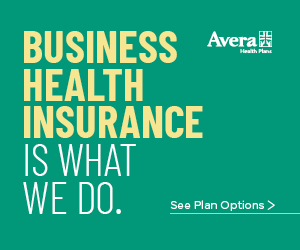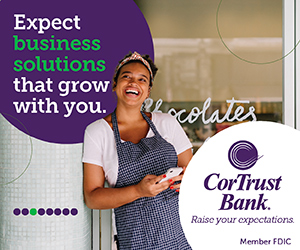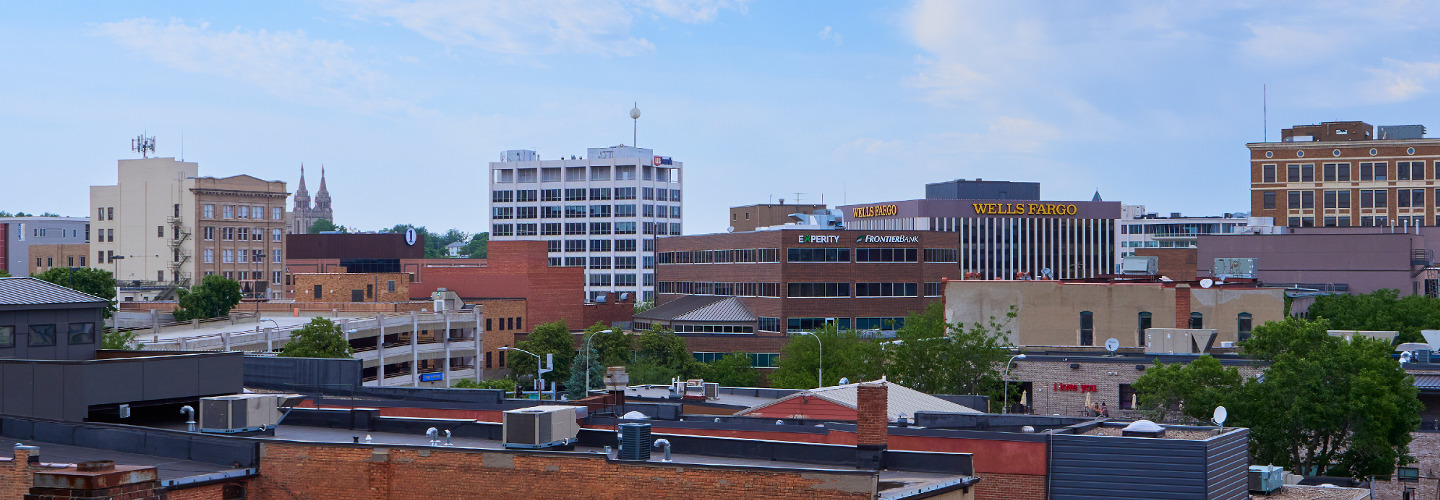
Vision Sioux Falls
A roadmap for the next decade
Sioux Falls is no stranger to developing broad-based community plans — they’ve been conducted approximately every decade since 1994. Past efforts have focused on community challenges from workforce to childcare, with various community groups and organizations tackling parts of the plan.
A new planning process that launched this fall — Vision Sioux Falls — aspires for broader inclusivity across the community, undertaking even more diverse issues than previous efforts.
“We want to make sure that this is a very holistic, quality of life plan and blueprint for next 10 years,” said Forward Sioux Falls Executive Director Mike Lynch, who is serving as project director.
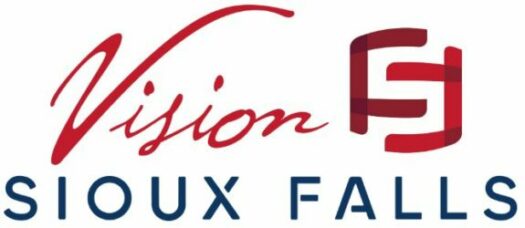
The Vision Sioux Falls Steering Committee is made up of representatives from the City of Sioux Falls, Greater Sioux Falls Chamber of Commerce, Sioux Empire United Way, Sioux Falls Area Community Foundation, Sioux Falls Development Foundation and Sioux Falls School District. The role of the Steering Committee is to extend and expand the project’s reach throughout the community, Lynch said. While they represent key stakeholders in the final plan, the Steering Committee members are not driving the initiatives but rather are champions of the process.
“Cities cannot remain static and are living environments that evolve over time. The most successful cities plan for these evolutions and establish visions for the direction they wish to evolve.
“This plan aims to be inclusive for all residents. . Therefore, we will provide opportunities to participate in a multitude of community engagement activities over next few months,” Lynch said. “It’s essential to have a steering committee devoted to maximizing that message.”
Consultants RDG Planning & Design are leading the process. They have a range of experience and have completed plans for communities across the globe. Their past work includes Midwest communities similar in size to Sioux Falls, including Des Moines, Iowa; Lincoln, Nebraska; and Yankton and Brookings, South Dakota.
The RDG approach is to create a plan designed and drafted to inspire the community and provide guidance on achieving the vision. Their methodology is broken down into three core elements: Where are we now? Where do we want to go? How do we get there?
“Sioux Falls isn’t unique in the sense that it’s becoming a more diverse community. The next generation will look a little different, will prioritize things differently. Even coming out of the pandemic, we’ve learned how people work continues to evolve. Our challenge and opportunity are how do we acknowledge the history and look to the future and design what that’s going to look like?” said Amy Haase, a principal at RDG and Sioux Falls project lead.
Where are we now
Previous Sioux Falls community planning efforts have taken different iterations depending on what was needed within the community at the time, Lynch said. Forward Sioux Falls has often spearheaded the processes. As a joint venture between the Greater Sioux Falls Chamber of Commerce and the Sioux Falls Development Foundation, Forward Sioux Falls has successfully raised funds for strategic initiatives since 1987. Perhaps more importantly, through its public-private approach, Forward Sioux Falls brings community leaders and businesses together to spearhead initiatives and expand success to all corners of the community
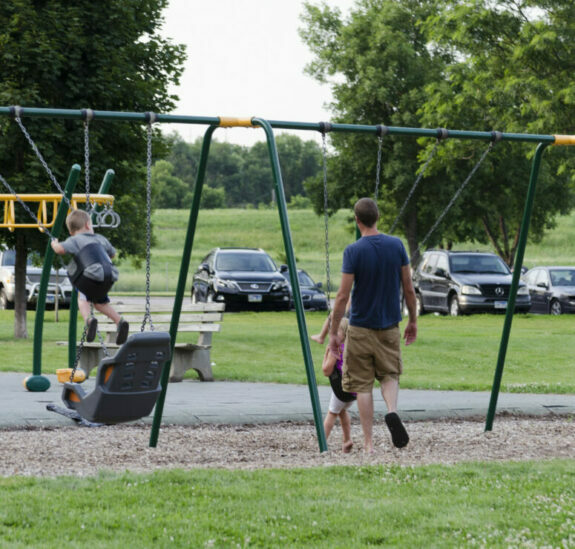
Community planning is another way Forward Sioux Falls brings people together. The most recent Forward Sioux Falls program, which runs from 2021-26, included a community planning process as part of its strategic plan. The current program raised funds during the pandemic, exceeding its $15 million goal. Rather than put off a community planning process, Forward Sioux Falls volunteer management was adamant about moving forward with planning.
“We have a lot of great momentum right now within the city. There are several other strategic plans that have recently taken place or currently taking place — and that’s great,” Lynch said. “The timing is vital because of that momentum. We want to make sure we’re out ahead of things. If the planning is right and the preparation is right, our stakeholders are put in positions to carry out what ultimately will be outcomes that collectively, we can all benefit.”
For the Sioux Falls Area Community Foundation, a strong community plan provides direction for their board of directors to know the community’s priorities, said Andy Patterson, President & CEO of the SFACF.
“Largely we work with donors with their goals and what they want to do with their funds,” Patterson said. “When we understand what the community needs, it helps us help donors in shaping plans on how they want to give back.”
Patterson has directly participated in past community planning projects as a project director and stakeholder representative. He’s a believer in the value of the process and excited about the opportunities ahead.
“It’s getting a perspective from community members on a broad range of issues,” he said. “To bring about change takes a lot of effort. Plans like this continue to the drum beat for things that are important,” he said.
Patterson was satisfied with responses from past iterations; however, he’s encouraged by RDG’s efforts to drill down even deeper into the community and expanding participation.
“We’re leaning on our professional facilitators to develop tools to reach out to different parts of the community. We’re doing things beyond meetings. We’re going out to where people are at. We’re using our connections to get to know people who may not have been included in the past,” he said.
Where do we want to go
Like many other communities, Sioux Falls has evergreen challenges like building a workforce and developing affordable housing. This time community leaders are asking for more input on quality of life topics, from arts and entertainment to public safety and health and human services.
We want to make sure we’re out ahead of things. If the planning is right and the preparation is right, our stakeholders are put in positions to carry out what ultimately will be outcomes that collectively, we can all benefit.”
It’s not that economic development issues aren’t pressing, Haase said; there are several factors that also impact the economy. While salaries and benefits are part of workforce recruitment, people can live and work anywhere they want. The question then becomes, “what in our community is helping us be competitive in keeping and attracting workforce to our community?” Haase said.
“So workforce is on the list, just in a more subtle way than it used to be,” she said. “These pieces are all about how we make a vibrant community and at the end of the day, that vibrant community supports our business community.”
In the next few months, the RDG team will be out in the community asking for input through both in-person and electronic methods. Representatives of different community sectors will be invited to participate in targeted meetings, like listening sessions, as well as larger, facilitated roundtable discussions. In addition, RDG will hold “pop-up” events at a variety of locations, with a goal of meeting people where they’re at and really drilling down into the community. In addition, a group of “community allies” will be utilized to reach out to community members who may not traditionally engage in public meetings or online surveys
“My sense is that this process is different. Previously, they were very focused on business community and economic development, and this is taking on a bigger, broader picture. We’re more focused quality of life to make our businesses stronger, to make people want to be here in Sioux Falls,” Haase said. “They’re broadening the conversation and emphasizing talking to that next generation who is going to help make Sioux Falls thrive and be a vibrant community.”
In addition to a Steering Committee, a Strategic Council made up of a broad base of community representatives is key to evaluating information gathered from surveys, meetings, roundtable discussions and pop-up events. They will meet three to four times throughout the process and provide feedback, guidance and reactions — about what may be missing, what gaps or trends they see that will impact Sioux Falls, Haase said.
“We’re going to hear a basketful of ideas and we need to narrow it down,” Haase said. “When we come to the end, we can’t have a 20-page list of goals and strategies. So, it’s how do you narrow it down from things that are highest priority and build momentum for other things — how do they cascade down to the other ideas and set us up to be well-positioned for the future.”
How do we get there
We’re doing things beyond meetings. We’re going out to where people are at.
RDG will deliver several documents to the Steering Committee throughout the project. When the process is complete in late spring 2023, a “basketful of ideas” will be winnowed down into a draft plan delivered to the Steering Committee. From there, the stakeholders will take ownership.
“As an outsider, I’m really impressed with what Sioux Falls has accomplished in previous processes,” Haase said. “That also made it appealing for us to work with Sioux Falls because we look at that and know this plan won’t collect dust on a shelf, our efforts won’t be in vain.”
But getting to that plan takes participation and engagement, she said.
“It goes back to the history of implementation. Everyone’s voice really does matter,” Haase said. “We may not be able to give everyone what they want, but our goal to incorporate what we can and at the end of the day that people see things that improve the quality of life for themselves and their neighbors.”
How can you participate or stay in the know?
- Take the online survey on the Forward Sioux Falls website. The survey is open to everyone in Sioux Falls to provide input.
- Attend Community Roundtables, which are larger public events that share information along the way and seek input on priorities through facilitated, smaller roundtable conversations.
- Pay attention to news about the project. Part of the role of the Steering Committee stakeholders is to share information with their various constituency groups. Chamber members will be updated throughout the process.
- To meet people where they’re at, the RDG team will create several “pop-up” events across Sioux Falls at both scheduled events and unscheduled locations. If you’re there, share your feedback
- Listening sessions are small group sharing sessions with invited representatives from various community factors (i.e., social services or recreation). If you’re invited to attend a listening session, bring your ideas.
